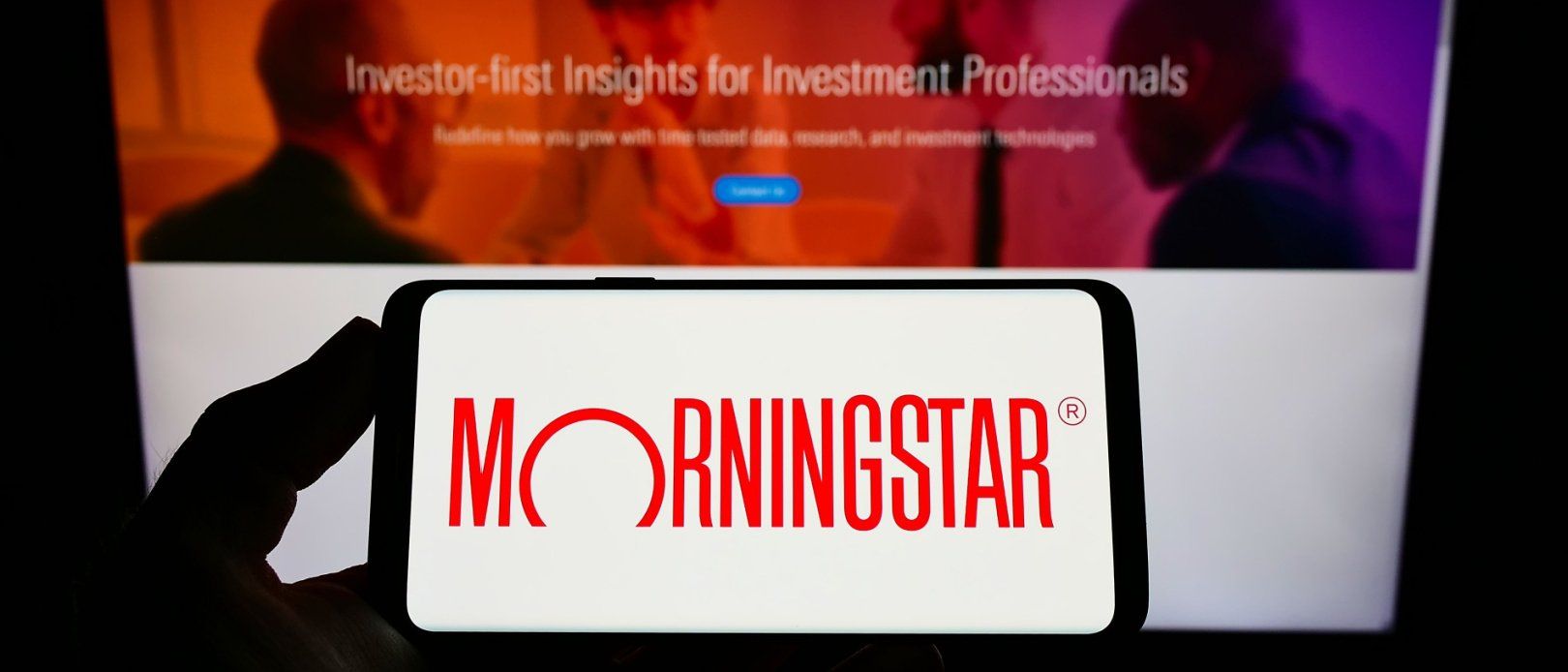
Morningstar review
T. Schneider / Shutterstock
We adhere to strict standards of editorial integrity to help you make decisions with confidence. Please be aware that some (or all) products and services linked in this article are from our sponsors.
We adhere to strict standards of editorial integrity to help you make decisions with confidence. Please be aware that some (or all) products and services linked in this article are from our sponsors.
Morningstar is one of the biggest names in investment research and with good reason. Premium-level membership includes resources to guide your investment decisions, focusing on the best stocks and funds. Let’s dig in and find out in this Morningstar review what makes it so great.
Pros
- Extensive research covering mutual funds, stocks, ETFs and bonds
- Best investments lists help you pick the best stocks and funds
- Coverage for more than 620,000 investments
- Discounts available for multi-year subscriptions
Cons
- Paid membership required for premium content
- Annual cost is as much as $359 when you pay monthly
What is Morningstar?
Morningstar is the perfect service if you believe in fundamental/ value investing. If you are a “chartist” then Morningstar's service is not for you. The website will not discuss technical charts, which determine when you should buy or sell via indicators like the stock passing the 52-week average.
Morningstar is more about proper asset allocation, low fee investment vehicles, and investments that generate consistent returns. It also offers several other key features:
- Investment thesis: Morningstar analyzes stocks, mutual funds, and exchange-traded funds (ETFs). It gives pros and cons for any investment (they call it “Bulls and Bears”).
- Stock and mutual fund screener: Users can find investments via hundreds of key data points.
- Morningstar offers a comparative benchmark performance category.
- Subscribers have access to actionable analyst reports with over 2,000 funds, ETFs, and stocks.
- Mutual funds are allocated into specific investment categories and stocks.
- The platform also states the annual fees to own an ETF or mutual fund. This is an important aspect that is often missed. Typically, the lower the cost, the better the odds to meet or beat the comparative index.
- Morningstar's X-Ray tool is second to none and ensures you aren't over-allocated in a specific sector, country, or stock.
- The platform also offers free and premium screeners. This is a quick method to narrow your selection of a stock or mutual fund.
- The cost analyzer is also a great tool to help pick one ETF or mutual fund over another.
Who is Morningstar for?
Morningstar is best for value investors who want to understand the fundamentals behind every investment. Originally, the firm reviewed only mutual funds, but it added stocks to the review roster a few years ago. Today, Morningstar's rating system is known throughout the investment community.
I look at services like Morningstar as a way to help speed up my research. You should always do your own investment research and not take what anyone says as gospel.
Morningstar is better for fundamental analysis. That’s different from the technical analysis used by chart-reading active investors.
How does Morningstar work?
Morningstar is a subscription service but also offers some free information. It started out in 1985 by rating mutual funds but has since expanded its services. When you sign up as a premium member, you'll get access to all data and tools, including an analysis of 621,370 investment assets.
Every asset gets its own detail page. You can navigate to many other features as well, including “best of” lists of the top stocks and funds picked by Morningstar’s professional analysts.

Investment reports from Morningstar are highly respected and among the best in the industry. A separation between Morningstar and the businesses it covers encourages an independent, trustworthy result.
Morningstar portfolios and tools
Portfolio X-Ray tool
While a mutual fund's prospectus will state its allocation in only U.S.-based companies, the statement may not be completely true. Morningstar's Portfolio X-Ray tool takes a mutual fund's quarterly SEC reporting of their individual stock ownership and uses it to determine your true asset allocation.
This is important because you may have the correct asset allocation on a macro level, you could be heavily weighted in a particular stock or category unknown to you. This could unknowingly increase your investment risk and decrease returns.

Although the X-Ray tool was great when we first reviewed Morningstar in 2010, X-Ray hasn't been improving. There are many other alternatives today. Competitors such as Empower offer free high-level analysis, which is decent enough for the average investor.
While Morningstar's Portfolio X-Ray goes into great detail about your asset allocation, it's a manual process. Morningstar's X-Ray tool is still useful, but it needs improvement and ‘s more cumbersome than alternatives offered by companies such as The Motley Fool.
You can try out the Instant X-Ray tool for free to get a taste of what the premium version includes.
Further Reading: The Motley Fool vs. Morningstar comparison
Stock screeners
Again, you can use basic screeners for free, but the Premium Stock Screener is a much more powerful tool with additional features to zero in on potential investments. Morningstar has screeners for stocks, mutual funds, and ETFs to help you find investments that match your goals, risk tolerance, and have Morningstar ratings to support your decisions.
One unique tool is the ESG Screener, which assists in finding investments that meet environment, sustainability, and governance guidelines, as well as specific minimum Morningstar ratings.

Other platforms like Seeking Alpha and The Motley Fool also have stock screeners you can try. But Morningstar's emphasis on sustainability ratings might be a selling point for some investors.
There's also pre-built screeners you can use if you need help finding your next investments. And remember: Morningstar has over 150 analysts, and their ratings and insights into companies is one of the main selling points of signing up. You get curated research straight from the source rather than having to rely on headlines or doing your own digging.
Of course, analysts can be wrong and often are. However, Morningstar does a good job at taking complex topics and company profiles and simplifying them to help with your decision making.
Portfolio monitor
Premium Morningstar customers can also use its portfolio monitoring tool to receive updates about your portfolio's performance. You can also edit how often you receive updates.

Just note that this doesn't include updates for stocks on your watchlist and is only for your actual portfolio.
Mobile app
Morningstar has a mobile app for Android, iPhone, and iPad devices. The app is free to download and can link up to your Morningstar account. These are regularly updated for security and new features. Options include the ability to sync portfolios from the website to your iPhone.
The app is great if you want to quickly analyze a stock. Otherwise, you are better off visiting the website.
Visit MorningstarMorningstar plans and prices
Anyone can use Morningstar’s free version, which includes some useful data, but it’s far from the complete set of what you get with Morningstar Premium. Premium memberships give you tools to hone in on new investment ideas, evaluate current investments and monitor your portfolio.
These are the price plans for Morningstar Premium:
| Price plan | Cost | Annual cost |
|---|---|---|
| Monthly | $29.95 | $359.40 |
| Annual | $199 | $199 |
| Two-Year | $349 | $174.50 |
| Three-Year | $449 | $149.67 |
There's also a 7-day free trial you can take advantage of if you want to test out Morningstar Premium before paying.
Visit MorningstarHow does Morningstar figure its ratings?
Many investors turn to Morningstar when evaluating funds. The company has built an entire business on ratings, using the famous five-star system that many of us are familiar with. But while funds like to tout their ratings and investors rely on them to determine what constitutes a “good” fund, ratings may not be terribly significant.
Funds with a three-year history all have ratings ranging from one star (lowest) to five stars (highest). To determine its star ratings, Morningstar looks at risk-adjusted trailing performance. As part of the formula, Morningstar does include costs, considering returns that come after fees are deducted.
However, the fact that past performance is a huge part of Morningstar's rating system means that there is a big problem with how meaningful the ratings actually are.
Past performance and future results
Investors are familiar with this refrain: “Past performance does not guarantee future results.” This means it's necessary to question the weight of a star rating system that's based on what has happened in the past. If past performance can't be taken as an indicator of future results, Morningstar's ratings might not be as consequential as expected.
However, past performance can provide clues about a company and its likely health. From that standpoint, looking into the past isn't a bad idea. But relying heavily on Morningstar ratings to help you choose a fund that will perform in the future might not be in the best interest of your investment portfolio.
Could expense ratios be more meaningful?
Instead of relying on Morningstar ratings, you might actually be better off checking expense ratios. Russel Kinnel, Morningstar Director of Research, has addressed the issue of star ratings vs. expense ratios. He basically hedged on the usefulness of the ratings from Morningstar and pointed out that expense ratios offer a better gauge of how a fund is likely to perform in the future.
The problem is that many funds, especially index funds, are going to deliver average returns when compared to the market. A lower-cost fund, therefore, provides you with the best chance of doing well. When shopping around for a fund, therefore, you might be better off taking a look at the expense ratios, and not paying as much attention to what star rating Morningstar provided.
Morningstar pros and cons
Pros
- Morningstar ratings: Investors around the world use Morningstar’s famous ratings to help them invest. Members can view ratings on all covered assets.
- Extensive research covering mutual funds, stocks, ETFs, and bonds: Morningstar reports include detailed analysis. Stock details include financials, dividends, ownership, valuations, and other data points. Fund reports look at holdings and performance and may include summaries from Morningstar analysis.
- Best investment lists help you pick the best stocks and funds: View lists by category and asset class with lists for undervalued, retirement and income, portfolio builders, and others.
- Coverage for more than 620,000 investments: That’s just a mind-boggling number of stocks and funds! If you can buy it through your brokerage, chances are Morningstar can tell you about it.
Cons
- Paid membership required for premium content: Basic accounts give you access to a little bit of what Morningstar has to offer to whet your appetite, but it’s far from a complete view of what the site gives to premium members.
- Annual membership is expensive: If you pay monthly, subscriptions cost nearly $359 per year.
Morningstar alternatives
StockRover

StockRover is a robust investment screening and analysis website. Members have access to various tools, including investment data, charts, research reports, ratings, customizable screeners and custom alerts. The research focuses on stocks, ETFs and mutual funds.
Find out more about StockRover in our review.
The Motley Fool

Motley Fool is a stock picking service that helps you understand the analysis and reasoning behind stocks in a diverse, long-term portfolio recommended by Motley Fool founders and analysts. It offers several membership plans with a focus on different types of stocks and investment goals.
It's one of the best Morningstar alternatives if you want actually stock recommendations delivered to your inbox every month. And its premium research is also high quality and current. Plus, The Motley Fool is expanding into new spaces, like cryptocurrency investing and the metaverse.
Learn more in our Motley Fool review.
Zacks Investment Research

Zacks is a well-known stock research company. The company provides stock research, analysis and stock recommendations. It's mostly known for its extensive collection of consensus earnings-per-share (EPS) estimates. It also includes research reports, charts, and lots of other investing tools and data.
Bottom line: is Morningstar right for you?
At the end of the day, is a subscription that costs $150 to $360 per year worth it? For many investors, it’s absolutely worth the cost. If you can turn an investment of hundreds of dollars per year into portfolio results worth thousands of dollars, you will come out far ahead with a Morningstar membership.
If you’re nervous about committing to a high-priced long-term membership, you can start with a 7-day trial with no risk or choose a lower-cost monthly membership early on. If you’re like many people with a focus on investment fundamentals, Morningstar could be perfect for your needs.
Visit Morningstar




